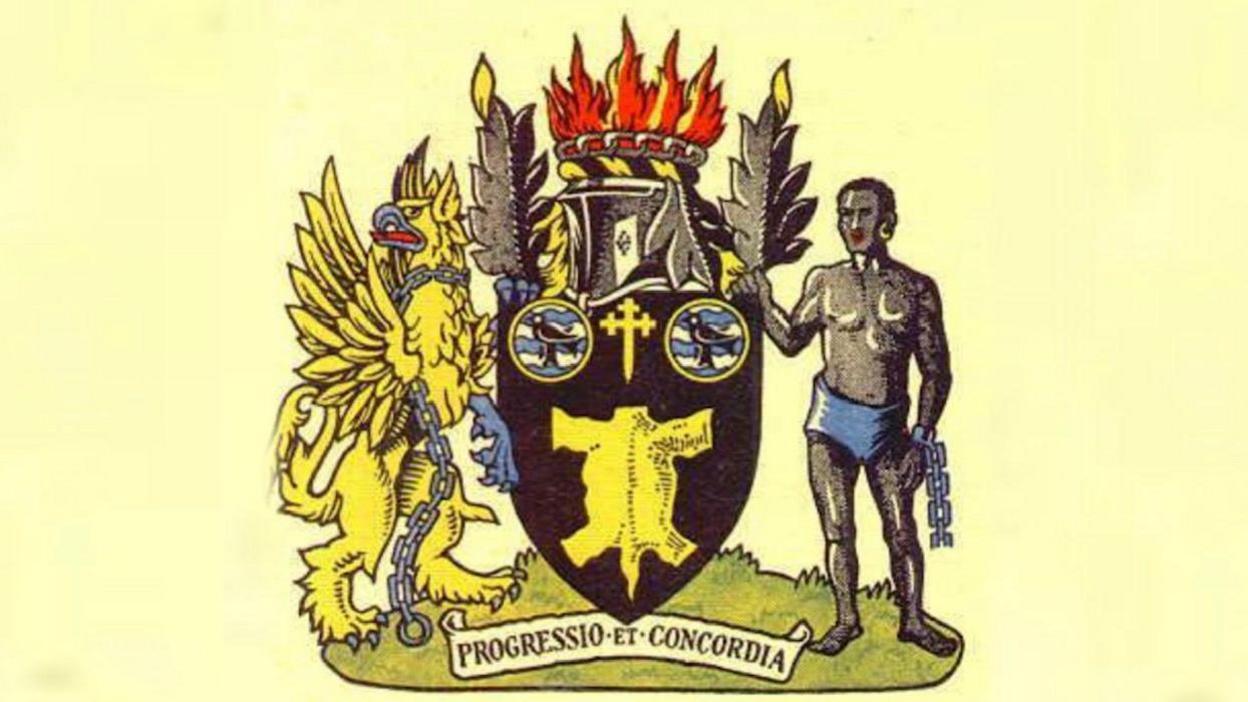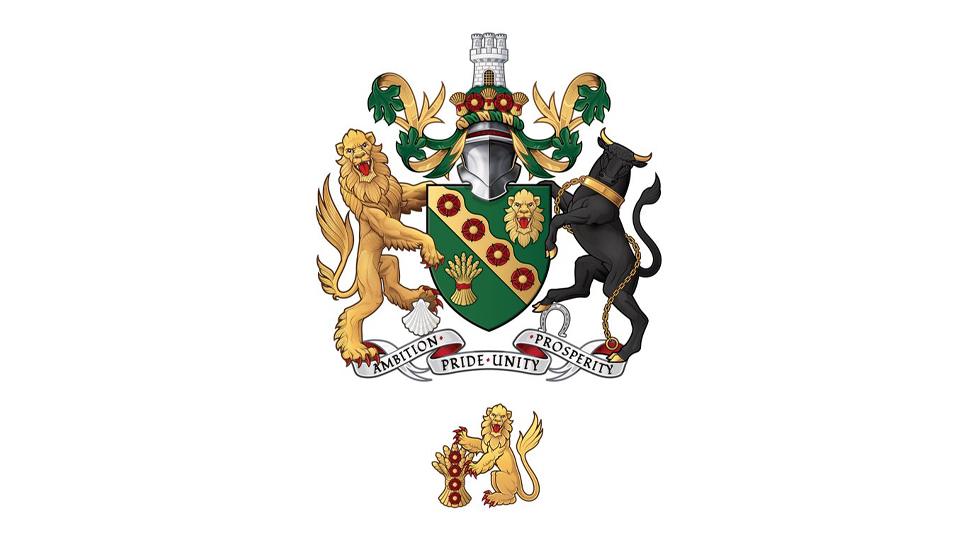Removal of slave from coat of arms sparks backlash

The new design has no supporters on either side
- Published
A council has defended the disappearance of a slave from a town's coat of arms.
The figure was originally included to reflect the work of the abolitionist William Knibb, who was born in Kettering, Northamptonshire.
A griffin has also been removed from the design.
Kettering Town Council said the changes were the result of heraldry rules.
As first reported in the Northamptonshire Telegraph, external, a black man with a broken chain has been part of the Kettering coat of arms since 1938.
Both the slave, who was depicted holding up the right side of the shield, and a rampant griffin on the other side are known as "supporters" in heraldry.
Supporters had been part of the Kettering Borough Council coat of arms, but rules on heraldry, external meant the town council - which is legally a parish - cannot use them.
The authority agreed at its first meeting in May 2021 to have no supporters on its coat of arms, with one resident telling the meeting, external the image of the slave should have been consigned to history and "we have the chance to be creating something new".
The artwork for the new version has now been acquired.
On social media, Duncan Bain, a former mayor of Kettering, agreed with a George Orwell quote posted by another contributor: “Every record has been destroyed or falsified, every book has been rewritten, every picture has been repainted... History has stopped."
Another correspondent posted: "Stop eradicating history, it's there to learn from. The world has gone mad."

The previous coat of arms included a griffin, representing the Montagu family, and a slave
A spokesperson for the town council said: "The College of Arms, which created the new coat of arms, advised that parish councils’ coats of arms cannot include 'supporters' – which in Kettering’s case involved an image of a freed slave – so the resulting coat of arms agreed by them and the King is essentially the central shield and helm.
"It is sad that the William Knibb reference has been lost from the coat of arms, but it is not a reflection of the view that anyone on the town council has about his work. It is not something the town council had any choice over."
The spokesperson added that plans were being made to create a permanent artwork to celebrate Knibb's work.
Get in touch
Do you have a story suggestion for Northamptonshire?
Follow Northamptonshire news on BBC Sounds, Facebook, external, Instagram, external and X, external.
Related stories
- Published4 March 2024

- Published23 May 2023

- Published16 June 2020
